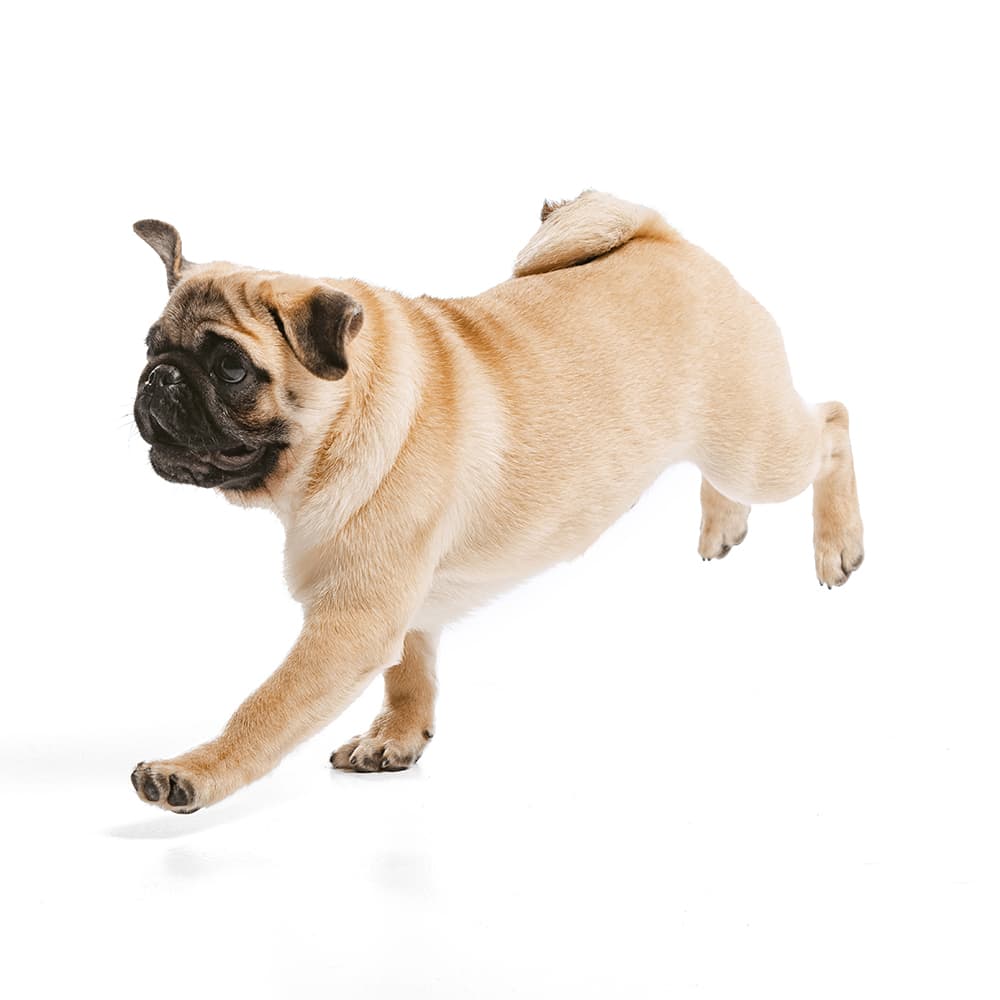Discover your dog's connection to this breed and 200+ others



Discover your dog's connection to this breed and 200+ others


The Pug is a breed of dog with historical origins in China, dating back to the Han dynasty (B.C. 206 to A.D. 200). These dogs were prized possessions of the emperors of China and lived in luxurious accommodations. Sometimes they were even given soldiers to guard them (1). They were later imported to Europe in the 16th century via the Dutch East India trading company, where they quickly gained popularity among the royal courts. In England, Queen Victoria developed a deep passion for the breed, which helped increase their popularity. The Pug was officially recognized by the American Kennel Club (AKC) in 1885.
Pugs can suffer from eye problems including dry eye or corneal ulcers. Like other brachycephalic breeds, they can experience breathing problems and do not do well in humid or hot weather. Pug Dog Encephalitis, hip dysplasia, May-Hegglin anomaly, pyruvate kinase (PK) deficiency, elongated palate, stenotic nares, entropion, nerve degeneration, seizures, patellar luxation, allergies, demodicosis, keratoconjunctivitis sicca, obesity, hemivertebra, and Legg-Calve-Perthes disease (LCPD) are other conditions that may affect this breed. Face wrinkles should be kept clean and dry as they are susceptible to skin fold dermatitis. The breed is also sensitive to anesthesia, and this should be discussed prior to any planned surgery.
Pugs are well-known for their friendly and sociable demeanor. They are known to be stubborn but are rarely aggressive, which makes them good for families with children. They are also known for their playful and clownish behavior, often referred to as 'clowns of the dog world'. Pugs enjoy both playtime and downtime with their owners, making them adaptable companions.
A canine genetic lineage is a group of individuals or entire breeds that descended from common ancestors predating modern breed formation. Often these lineages are associated with a ‘type’ of dog with a unique historical working role and associated behaviors (e.g., herding, scent hunting, etc.).
Spitz and Sled Dogs originate in the Arctic and subarctic regions which caused them the develop adaptations to cold climates. Some of these adaptations give rise to characteristics of the lineage, most notably a dense double coat that helps with insulation. The lineage of these dogs can be followed back to ancient breeds developed by Indigenous people. These ancient breeds were used as an aid for transportation, herding, guarding, and hunting. These jobs have created dogs that are independent, intelligent and have strong work ethics as well as a sturdy body that helps them to pull sleds or go on long journeys over rough terrain.
Example breeds with ancestry from this lineage include Akita, Chow Chow, and Siberian Husky.
The classic reference to a group of pugs is a "grumble", as in "Look at that grumble of pugs in the park".
Pugs are also sometimes referred to as "Dutch Mastiffs" due to their historical association with the Dutch royal court. In China, they are called "Lo-Sze" .
The Pug is the official breed of the House of Orange in the Netherlands after a Pug reportedly saved the life of William, Prince of Orange, by alerting him to approaching Spaniards in 1572.
Pugs have a distinctive curly tail that tightens up when they're excited or playful.
https://www.akc.org/dog-breeds/pug/
https://www.petmd.com/dog/breeds/c_dg_pug
https://www.pawprintgenetics.com/products/breeds/32/
https://www.fci.be/en/nomenclature/PUG-253.html
https://www.ukcdogs.com/Pug
Recommended by top vets with decades of experience
21 breeds
64 genetic health markers
50 genetic trait markers
